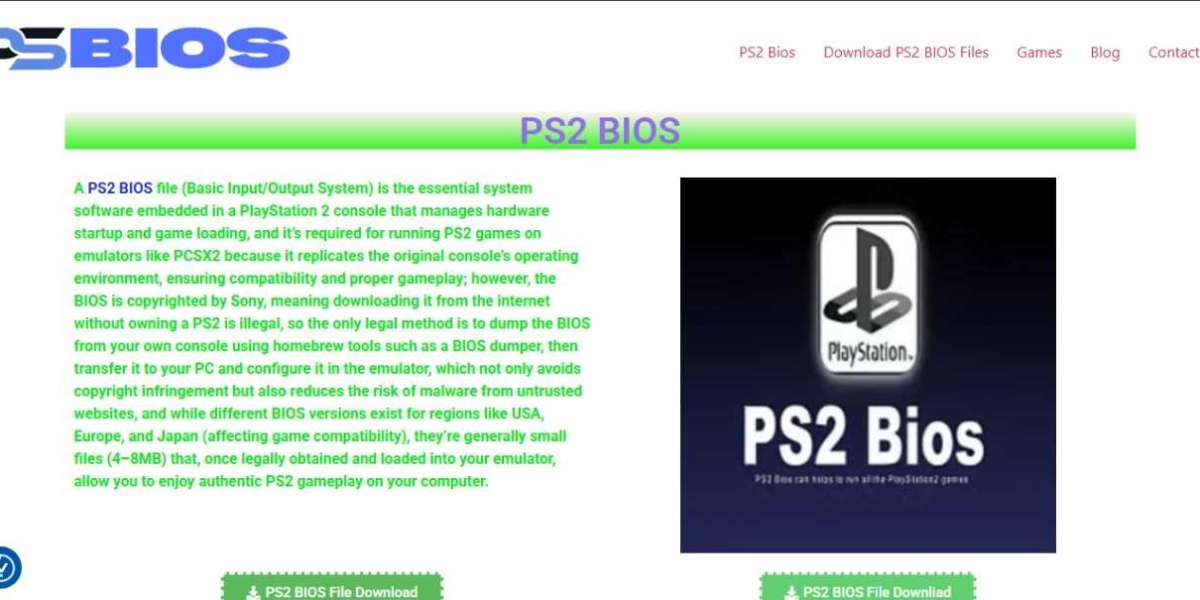The PlayStation 2, commonly known as PS2, remains one of the most beloved and iconic gaming consoles in history. Released by Sony in 2000, it set new standards for home entertainment with its expansive library, powerful hardware for its time, and compatibility with the original PlayStation games. While the hardware and games often receive the most attention, an essential component that works behind the scenes is the ps2 bios. This critical piece of software plays a fundamental role in enabling the console to operate and has intriguing implications for both gamers and developers alike.
What is the PS2 BIOS?
The PS2 BIOS, short for Basic Input Output System, is the firmware embedded in the PlayStation 2 hardware. It acts as the system's foundational software that initializes the console’s hardware during startup and provides essential functions that facilitate communication between the operating system and the console's hardware components. Essentially, the BIOS is the console’s first point of contact when it is powered on, setting up the environment so that games and other software can run smoothly.
Unlike games or other applications that are stored on discs or memory cards, the BIOS is stored in a protected section of the PS2’s internal memory and cannot be easily modified by users. It contains critical routines that handle everything from memory management, loading game data, to providing system-level security.
The Importance of PS2 BIOS in Gaming Experience
Without the PS2 BIOS, the console would not be able to boot up or execute games. When a user inserts a game disc and powers on the console, the BIOS performs a hardware check to ensure all components, such as the CPU, graphics processor, and memory, are functioning correctly. It then loads the game’s data from the disc into memory and begins execution. The BIOS is also responsible for loading system menus, managing controller inputs, and handling audio and video output settings.
Moreover, the BIOS ensures compatibility and stability. The PS2 hardware could be quite complex with various revisions over the years, and the BIOS software was designed to accommodate these differences while providing a consistent user experience. This foundational software also includes copyright protection mechanisms, helping prevent unauthorized software from running on the system.
PS2 BIOS and Emulation
One of the most significant ways the ps2 bios has entered popular discussion outside of the original console users is through emulation. Emulators are software programs that mimic the PS2 hardware environment on a different platform, such as a PC, allowing gamers to play PS2 titles without the physical console. However, emulating a console is no simple task, and the BIOS plays a crucial role here as well.
To replicate the PS2 environment accurately, emulators often require a copy of the original PS2 BIOS. This allows them to execute the same system routines that the console uses, ensuring compatibility with games and providing a more authentic experience. Without the BIOS, an emulator cannot properly initialize games, leading to crashes or incomplete functionality.
However, due to copyright laws, the PS2 BIOS cannot be legally distributed by emulators or third parties. Users typically must extract the BIOS from their own PS2 console to stay within legal boundaries. This requirement has sparked debates in the gaming community regarding digital preservation and the legality of emulation, but the BIOS remains a linchpin in this technology.
How PS2 BIOS Differs from Other Console BIOS
The PS2 BIOS is unique compared to the BIOS of other gaming consoles in several ways. For instance, it supports backward compatibility, meaning it can run original PlayStation (PS1) games in addition to PS2 titles. This dual functionality necessitates additional routines within the BIOS to switch between different hardware modes and software libraries seamlessly.
Additionally, the PS2 BIOS supports a broad range of multimedia functions, as the console was designed not only for gaming but also as a DVD player. This means the BIOS includes capabilities for decoding DVD video and managing user interactions related to DVD playback, which was an innovative feature at the time.
Compared to newer consoles, the PS2 BIOS is relatively simple in terms of security and user interface. Modern consoles have moved towards cloud-based firmware updates and more complex encryption, whereas the PS2’s BIOS was a static firmware embedded in the hardware. This simplicity sometimes makes the PS2 more accessible to hobbyists and modders looking to explore its inner workings.
The Role of PS2 BIOS in Console Modding and Homebrew
The PS2 BIOS has also played an important role in the world of console modding and homebrew software. Modding refers to the process of altering a console to extend its capabilities beyond what was originally intended by the manufacturer. Homebrew software consists of user-created applications and games that run on the console without official licensing.
Because the BIOS controls many core functions, understanding and sometimes bypassing certain BIOS restrictions is crucial for modders. Custom firmware and software loaders often exploit vulnerabilities or utilize BIOS functions to allow the running of unsigned code. This has enabled a thriving community of enthusiasts to develop new games, utilities, and even emulators for the PS2 itself.
However, this also raises legal and ethical questions regarding the use of BIOS firmware. While modding and homebrew can unlock new creative possibilities, they sometimes come into conflict with Sony’s copyright protections. Despite these challenges, the BIOS remains at the heart of these explorations into the PS2’s capabilities.
Challenges in Preserving the PS2 BIOS
As time moves on and technology evolves, preserving the PS2 BIOS has become an important topic for gaming historians and digital archivists. The PS2 was a cultural phenomenon with millions of units sold worldwide, and its games and software hold significant nostalgic and artistic value. Yet, as physical hardware ages and becomes scarce, keeping the software environment accessible is crucial.
One challenge in preserving the PS2 BIOS is its proprietary nature. Because it is copyrighted and tied to Sony’s intellectual property, distributing BIOS files outside of the original console owners is illegal. This restricts the ability of museums, archivists, and researchers to make the BIOS widely available for study and preservation.
Another challenge is hardware degradation. As PS2 consoles age, internal components can fail, making it difficult to extract the BIOS from older machines. Fortunately, techniques have been developed to dump the BIOS safely, but these require technical know-how and specialized equipment.
Preserving the BIOS is also vital for maintaining the authenticity of PS2 emulators, which depend on it for accurate gameplay. Without continued access to BIOS files, future generations may lose the ability to experience these games in their original form.
Conclusion: The Unsung Hero of PS2 Gaming
The PS2 BIOS might not be as visible or celebrated as the console’s games or hardware, but it is undeniably the unsung hero behind the PlayStation 2’s enduring success. This foundational firmware ensures that the console boots correctly, loads games efficiently, and offers features beyond gaming, such as DVD playback. Its role in emulation and modding communities further underscores its importance, bridging the gap between past technology and modern digital preservation efforts.



